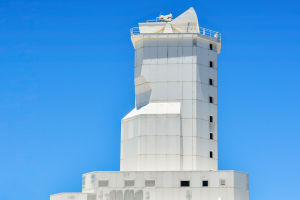When we think of aircraft, helicopters and airplanes often come to mind. Both are remarkable flying machines, yet they operate on fundamentally different principles. So, why is a helicopter not an airplane?
The answer lies in their design, functionality, and the way they achieve flight. Let's explore the fascinating differences between these two types of aircraft.
The Basics: How Helicopters and Airplanes Fly
Airplanes: Airplanes achieve flight through fixed wings and forward motion. The wings are designed to generate lift when air flows over them, thanks to the airplane's speed. As the airplane moves forward, air passes over the curved top of the wings, creating lower pressure above the wings and higher pressure below. This difference in pressure generates lift, allowing the airplane to soar into the sky.
Helicopters: Helicopters, on the other hand, don't rely on forward motion to generate lift. Instead, they have rotating blades, or rotors, that spin horizontally above the aircraft. These rotors create lift by moving air in the same way that an airplane's wings do, but they do so by spinning in place. This allows helicopters to hover, move vertically, and even fly in any direction without the need for a runway.
Design Differences: Fixed Wings vs. Rotating Blades
Airplane Design: Airplanes have fixed wings that are crucial to their flight. These wings are typically long and flat, and their shape is optimized for generating lift at high speeds. The airplane’s engines provide the necessary thrust to move the aircraft forward, while the wings take care of lifting it into the air. Because of this design, airplanes require a runway for takeoff and landing, as they need to reach a certain speed to achieve lift.
Helicopter Design: Helicopters are equipped with one or more rotors mounted on top, which provide both lift and thrust. Unlike airplanes, helicopters don't need a runway; they can take off and land vertically. The ability to hover and maneuver in tight spaces makes helicopters ideal for missions where airplanes would struggle, such as search and rescue operations, medical evacuations, and urban transportation.
Maneuverability and Versatility: Helicopters Take the Lead
Airplanes: Airplanes are designed for long-distance travel at high speeds. They excel at flying in a straight line over large distances, making them the preferred choice for commercial air travel, cargo transport, and government operations that require covering vast areas. However, airplanes are less maneuverable at low speeds and cannot hover in place.
Helicopters: Helicopters shine in situations where precision and versatility are key. They can hover in place, fly sideways, and even go backward. This exceptional maneuverability allows helicopters to perform tasks that airplanes simply cannot, such as hovering over a specific location for an extended period, landing in confined spaces, and accessing remote or hard-to-reach areas.
Practical Uses: Different Aircraft for Different Missions
Airplane Applications: Airplanes are the go-to choice for commercial flights, army transport, cargo delivery, and long-distance travel. Their ability to cover great distances quickly makes them ideal for connecting cities and countries. Additionally, airplanes are used in agriculture (crop dusting), firefighting (aerial water drops), and reconnaissance missions.
Helicopter Applications: Helicopters are used in a wide range of specialized roles. Their ability to hover and land in tight spaces makes them invaluable for search and rescue operations, medical evacuations, and missions in rugged terrain. Helicopters are also used in news reporting, aerial photography, law enforcement, and even tourism, where they offer breathtaking aerial views.
In summary, while both helicopters and airplanes are marvels of aviation, they are fundamentally different in design, operation, and purpose. Airplanes rely on fixed wings and forward motion to achieve lift, making them ideal for long-distance travel at high speeds. Helicopters, with their rotating blades, offer unparalleled maneuverability and versatility, allowing them to perform tasks that airplanes cannot.


